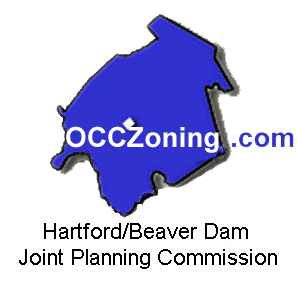 |

| ||||
|---|---|---|---|---|---|
|
Hartford/Beaver Dam is well known as a community with a good quality of life, small and cohesive neighborhoods. This deserving reputation is due in part to the City’s small size, entrepreneurial spirit, civic-minded citizens and activist government. One of the many factors that makes Hartford/Beaver Dam such a great place to live, work and visit is the community’s attention to detail, and respect for it’s setting, heritage and quality urban design. Hartford/Beaver Dam’s Design Guides strives to protect the city’s unique qualities and strong sense of place by carrying out citywide development and design objectives. The purpose of this Design Guide is to help applicants in preparing projects to be reviewed by the Hartford/Beaver Dam Planning Commission. Through materials such as this, the Hartford/Beaver Dam Joint Planning Commission seeks to make information available well before the final design of a project saving the applicant, and the city, time and money. Identity. Image. Style. Quality. Service. These are the messages that can be instantly projected through the use of a sign. There are many "tricks" used in order to maximize visibility; moving parts, misspelled words, logos, bigger, brighter, etc. This type of sign "competition" however is not appropriate in Hartford or Beaver Dam where we place a high value on our heritage and visual environment. (See Article XI, §10,§§ 7 regarding "flashing lights and signs"). DESIGN ISSUES Purpose Signs should complement, not overwhelm, the overall picture of your business. A sign’s greatest effect comes when the overall design of the building, property and other signs nearby are considered together. This means that placement, size, materials, method of lighting, and even colors, are brought together to achieve the best possible effect – for both the business and the community. When the ‘big picture’ is taken into consideration, an attractive and inviting street experience is created for customers. Placement The placement of the sign on your building or site is very important. In Hartford and Beaver Dam, we take great pride in our ‘built environment’. Instead of billboards with flashing lights and revolving messages, signs in our community are much more oriented to the pedestrian rather than the automobile. Because of this, size, height and quality are particularly important sign characteristics. All buildings have architectural details - some more obvious than others. Even the simplest building has design elements which should be respected. Proper placement of signs is critical to the successful renovation of historic buildings. Types of Signs Signs come in many different forms. Signs can be freestanding or attached, single or multiple-sided, part of an awning or painted on the building or window. The type of sign you choose should depend on what will work best with your building and site. However, signs with flashing animated intermittent illumination are not allowed. (See Article XI, §10,§§ 7 regarding "flashing lights and signs"). Using awnings as signs is an effective method in many cases. Not only are you getting your message out, but you’re also providing a decorative element to a window or doorway – emphasizing the main entry, while providing shade and cover. Lighting Making your sign legible at night is another issue. The first thing to consider is "Does the sign need to be illuminated at all?" There may be ambient light from store windows or nearby street lights that will provide adequate light for your sign already. If lighting is necessary, be sure that the light doesn’t create glare by being too bright. To cut down on energy costs, turn the sign lights off when the business is closed or during those hours when it is not needed for security purposes. There are three common lighting approaches for signs: indirect, internally illuminated, and backlit. For indirect lighting, the light should come from just above or just below the sign, and be focused directly onto the sign itself. This reflects the light where it is needed - making the sign easier to read. With an internally illuminated sign, the lettering should be a lighter color against a dark background which makes the letters much easier to read. This approach is also effective for non-illuminated signs. Back-lit, individual letters, where the light source is placed in a channel behind the letters, is also an effective sign format. In this instance, light falls on a portion of the building’s facade, helping to form a silhouette of the letters. The most important rule here is "simple is better." Signs are meant to be read quickly and to offer identification. Don’t confuse the reader with more than they need. The name of the business and street address is often all that is necessary. Information such as product names, hours of operation, prices, specials, and even phone numbers may change – why invest in making them a permanent part of your sign? One effective way to provide additional information is to run words along the base of the storefront window. This is much easier to change down the road. OBJECTIVES FOR SIGNS √√√√√ A sign should be an enhancement to Hartford and Beaver's heritage, visual character and environment. √√√√√ Signs should enhance architectural elements of a building, not obscure or obliterate them. √√√√√ Signs should identify the business, not advertise brand names. Signs should be simple and neat with minimal wording to improve legibility. √√√√√ Sign materials should be harmonious in color, materials and lighting with the building. Signs must not be distracting to motorists. Permits The type, size, location, and dimensions of all signs in Hartford and Beaver Dam are governed the Hartford/Beaver Dam Joint Planning Ordinance. The requirements differ based on where in the City the sign is to be located, and the type of sign you wish to use. Before erecting any sign, please contact the Hartford/Beaver Dam Joint Planning Commission.
|

